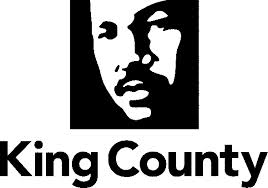
Case Study: Path with Art
Case Study: Path with Art
Founded: 2008
Headquartered: 312 2nd Ave S, Seattle, WA 98104
Program Locations: Sites across Seattle
2016 Operating Expenses: $1.05m
Path with Art’s current headquarters occupies a street-level storefront in the historic Pioneer Square district. Where a homeless men’s rescue shelter exists less than a block from a strip of trendy new restaurants and art galleries, the neighborhood in many ways exemplifies Seattle’s current identity crisis of rocketing growth coupled with trenchant homelessness. At Path with Art, warm bricks line the façade blending it into the quaint streetscape, and inside, the white gallery walls are proudly emblazoned with the names of their student-artists, currently or formerly homeless adults. The space hums with energy as a drop-in poetry class takes place in the main area surrounded by partial walls.
Started in 2008 by a small group of women who had experienced the healing power of art and decided to share it at Mary’s Place, a local women’s shelter, Path with Art has grown in the last ten years into one of the “most all-encompassing arts and homeless organizations found in North America.” In 2018, they expect to serve 750 adult student-artists, referred to Path with Art through partnerships with over 30 social service organizations. Student-artists engage in rigorous arts education ranging from printmaking, poetry, choir, mosaic, and dance in eight-week classes taught by approximately 34 professional teaching artists and arts faculty, and supported by volunteer creative mentors.
Classes and programs are held at their Pioneer Square headquarters, and more sites for arts engagement span the city from Plymouth Congregational Church to the Seattle Art Museum. In addition to their core Arts Education program, they also produce over 50 guided trips annually for students to attend professional art venues, hold regular public exhibitions of student artwork and performances, and produce place-based arts engagement opportunities with the Downtown Seattle Association to bring disparate perspectives together through art in programs called Community Connections.
Social Impact: Transforming trauma through art
In a society that views homelessness as an individual problem, rather than a systemic failure, the students who come to Path with Art have endured chronic trauma of being told they are to blame for their homelessness or they are not good enough to walk through mainstream society with respect. The impact of such social isolation is debilitating and long-lasting. Even with stable housing, students continue to struggle with the next steps. Many participants do not feel safe, much less feel like they can find community, and tend to isolate themselves in their room. As a Path with Art teaching artist described, the emergence from homelessness and addiction is like facing a blank canvas, “We get students who, at this point, they are fed. They are in some situation, they need to decide or know what to do next…You have to take a risk at having an idea, have the courage to take a brush, embark on a creative process.” Having the strength to start again from nothing, whether in art or in personal life, is key to long-lasting resilience.
To the skeptics’ question, “don’t homeless people need homes, not art?” Path with Art is clear. What art provides is for trauma recovery and stability, which is why they partner with over 30 social service organizations to provide the basics and students must be engaged with a service partner to attend Path with Art programming. While the model in the past has relied on social service and housing providers to connect students to Path with Art, since moving to the Pioneer Square storefront, the referrals have been going in the other direction as well. Attracted to the storefront and the opportunity to make art, homeless people not previously connected to services come in the door and are able to be referred to partners.
Trauma manifests differently in every individual, and sometimes creates defensive behaviors so unexpected that students hardly recognize themselves. When students are ready, art provides an alternative approach to grappling with traumatic experiences. It provides a new avenue for deeply personal material to become art and dealt with outside of oneself. The verb “to express” means both to simply say something you mean, and to squeeze something out, as juice from a lemon, and both meanings are relevant to the art made here. An evaluation of a similar arts engagement program with at-risk populations from the UK noted a 71% decrease in feelings of anxiety and a 75% fall in depression. 76% of participants report increase wellbeing and 69% feel more socially included.
When given a dry space and safe community to make art, students individually shed the labels of homeless, poor, addict, needy, and don powerful new titles: artist, creator, maker, doer, accomplished, friend.
For people with the privilege of a stable home or a workplace, the necessity of having a place to create can easily be forgotten. Living in a tent city, there are precious few opportunities to express individuality and the living circumstances begin destroying anything you create just as soon as you have made it. When given the opportunity and a safe, dry space to make art, and be in safe community, students individually shed the labels of homeless, poor, addict, needy, and don powerful new titles: artist, creator, maker, doer, accomplished, friend. They can be completely different people inside this safe, dry “Art Home.” As one participant described, “when I came here, I was so used to being… therapized, fixed. I was so medicalized. I come here and it’s like freedom. I’m an artist. I’m not a sicko wacko medical subject. I am a person who is valued.”
Path with Art, however, did not stop at the individual social impact. They set out to change the way the city’s society interacts with homelessness through their Community Connections work. In a city grappling with rising income inequality and gentrification, there are over 12,000 people sleeping on the street, in cars, RVs, tent camps or in shelters in the Seattle/King County area. Though walking the same streets, the personal divide between the housed and the homeless can feel like an impassable gulf, stifling community vitality. Often, housed people’s only contact with unhoused people is one that fosters negative stereotypes, often misrepresenting the human side of homelessness or the diversity of demographics living in homelessness. Inspired by Bryan Stevenson’s theory of Proximity and Empathy, Path with Art intentionally set out to create a venue where the CEO of Boeing might stand shoulder-to-shoulder with a formerly homeless artist and experience a piece of art as simply two human beings. In the year-long community-based project, We Are All Here, Path with Art challenged Seattleites to submit poems on “what it means to be community” in public drop boxes across the Pioneer Square neighborhood. Selected poems inspired visual art by Path with Art students, which in turn inspired a symphonic composition and performance in partnership with Seattle Symphony all brought full-circle to Occidental Park in the heart of Pioneer Square several months later. By occupying public space with poetry and visual art, the process expanded Path with Art’s student-artists’ “Art Home” beyond their four walls into the broader neighborhood. For a change, passers-by were invited into the students’ space to participate in an authentic personal exchange.
Sponsors
Social Impact Study Community Conversations Sponsors
![]()
![]()






